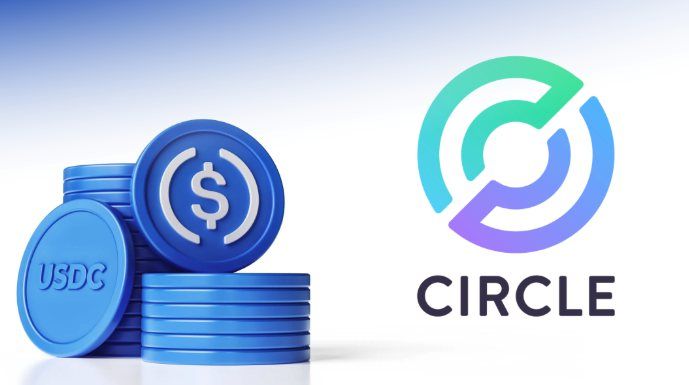MarketLens
Circle's IPO Success: Catalyst for Stablecoin Evolution, RWA Tokenization, and Real Estate Investment
 Circle Internet Group's Initial Public Offering (IPO) in June 2025 wasn't just another routine event in the financial markets—it marked a transformative moment signaling a seismic shift in the digital finance landscape. Known widely as the issuer of the USDC stablecoin, Circle's explosive debut on the New York Stock Exchange (NYSE) has profound implications for stablecoins, real-world asset (RWA) tokenization, and the broader real estate investment market. This article delves deeper into how Circle's IPO is reshaping traditional finance, exploring emerging opportunities and challenges across the financial industry.
Circle Internet Group's Initial Public Offering (IPO) in June 2025 wasn't just another routine event in the financial markets—it marked a transformative moment signaling a seismic shift in the digital finance landscape. Known widely as the issuer of the USDC stablecoin, Circle's explosive debut on the New York Stock Exchange (NYSE) has profound implications for stablecoins, real-world asset (RWA) tokenization, and the broader real estate investment market. This article delves deeper into how Circle's IPO is reshaping traditional finance, exploring emerging opportunities and challenges across the financial industry.
Circle's IPO: A Defining Moment for Crypto and Fintech
Circle's IPO was nothing short of extraordinary. Initially priced at $31 per share, the stock opened at $69, eventually surging to an intraday peak of $123.49 just one day after its debut. This incredible market reception enabled Circle to raise approximately $1.1 billion, giving it an initial valuation close to $6.9 billion. The IPO was oversubscribed by an impressive 25 times, underscoring the strong investor confidence and high demand.
But what does this mean beyond numbers? Circle's remarkable performance has firmly established credibility for regulated stablecoin issuers, creating a powerful narrative that digital currencies—when managed responsibly—can generate robust investor interest and genuine financial returns.
Table 1: Circle (CRCL) IPO Key Highlights
| Metric | Value |
|---|---|
| Ticker Symbol | CRCL |
| IPO Date | June 5, 2025 |
| Exchange | NYSE |
| IPO Price | $31 per share |
| Shares Offered | 34 million |
| Capital Raised | Approx. $1.1 billion |
| Initial Valuation | Approx. $6.9 billion |
| Day 1 Opening Price | $69 |
| Day 1 Closing Price | $83.23 |
| Intraday High (Day 2) | $123.49 |
| IPO Oversubscription | 25 times |
Sparking a Wave of Crypto and Fintech IPOs
Circle's IPO isn't just a singular success—it's a market catalyst. Shortly following Circle's extraordinary listing, Gemini, another influential cryptocurrency exchange founded by the Winklevoss twins, swiftly filed its IPO paperwork confidentially. This proactive move underscores the ripple effect Circle's IPO has generated, encouraging other digital asset businesses to approach public markets confidently.
Accelerating Stablecoin Market Evolution
Stablecoins have often operated under a cloud of skepticism, viewed cautiously by traditional investors. Circle's successful IPO fundamentally changes that perception, showcasing the potential for stablecoins—especially highly regulated ones like USDC—to become mainstream financial instruments.
Financial institutions are now increasingly likely to integrate stablecoins into their operations, including cross-border transactions, corporate treasury management, and DeFi interactions. Moreover, Circle's success is prompting regulators worldwide to prioritize clearer frameworks, thus establishing a safer, more transparent operating environment for stablecoins.
Real-World Asset (RWA) Tokenization: The Next Frontier
Tokenizing real-world assets transforms traditional investment barriers by creating fractional ownership opportunities in assets like real estate, private credit, and commodities. By converting physical and intangible assets into tradable digital tokens, blockchain technology dramatically enhances asset liquidity, lowers transaction costs, and improves market transparency.
The RWA tokenization market is projected to exceed $10 trillion by 2030, indicating a substantial shift in asset management and ownership globally. Tokenization democratizes investments by allowing smaller investors to participate in previously inaccessible asset classes, providing diverse opportunities for portfolio diversification.
Table 2: RWA Tokenization Market Projections
| Aspect | Details |
|---|---|
| Current Market Size | $23 billion (H1 2025) |
| Projected Market Size (2030) | Over $10 trillion |
| Real Estate Tokenization (2035) | $4 trillion |
| Key Growth Drivers | Liquidity, accessibility, reduced costs |
How Stablecoins are Fueling RWA Growth
Stablecoins like USDC underpin the rapid growth of RWA markets, serving as an essential medium of exchange within digital asset ecosystems. The rise of RWA-backed stablecoins—tokens directly collateralized by real-world assets such as government securities or real estate—adds another layer of value, combining the stability of traditional financial instruments with blockchain's flexibility and transparency.
In DeFi ecosystems, these RWA-backed stablecoins provide enhanced collateralization, reducing risks associated with market volatility and enabling more favorable lending and borrowing terms. They also support more efficient cross-border transactions, significantly outperforming traditional payment systems in speed, cost, and reliability.
Real Estate Tokenization vs. Traditional REITs: A New Investment Paradigm
Real estate has traditionally been a cornerstone of wealth generation but often remained out of reach for smaller investors due to high entry barriers. Tokenization challenges this status quo by enabling fractional ownership of high-value properties, opening new avenues for broader investor participation.
Traditional real estate investment trusts (REITs), while providing steady dividends and established liquidity, face heightened competition from tokenized real estate. Tokenized properties offer potentially higher yields by directly linking investment returns to asset performance, alongside greater transparency through blockchain technology.
Table 3: Tokenized Real Estate vs. REITs
| Feature | Tokenized Real Estate | Traditional REITs |
|---|---|---|
| Accessibility | Lower entry barriers | Higher entry points |
| Liquidity | 24/7 trading | Limited market hours |
| Transparency | Immutable blockchain ledger | Standard financial disclosures |
| Potential Returns | Directly linked to asset performance | Steady but potentially lower dividends |
This shift compels traditional REITs to evolve, adopting blockchain innovations to remain competitive. Tokenization provides REITs opportunities to increase efficiency, enhance liquidity, and expand investor access by lowering investment thresholds.
Strategic Implications: Preparing for the Financial Future
Circle's IPO, stablecoin mainstreaming, and the burgeoning RWA tokenization market represent interconnected shifts reshaping global finance. Investors and industry stakeholders must adapt strategically to these transformative trends.
Financial institutions need to anticipate a landscape where digital and traditional finance blend seamlessly. To navigate this evolution successfully, they must prioritize technological innovation, adopt robust risk management practices, and actively engage in regulatory developments to ensure compliance and stability.
Regulatory clarity and technological advancements in blockchain infrastructure will be critical in facilitating this transition. Ensuring secure digital asset custody solutions, developing interoperable blockchain platforms, and establishing standardized frameworks for taxation and accounting will be foundational steps.
Ultimately, building investor trust through transparency, education, and demonstrable value creation will determine how successfully this convergence of traditional and digital finance unfolds. Circle's IPO has illuminated the potential of digital assets in the public sphere, and now the broader financial community must embrace innovation, mitigate risks, and capitalize on new opportunities to navigate this exciting new era of finance.
Related Articles
Category
You may also like
No related articles available
Breaking News
View All →No topics available at the moment






